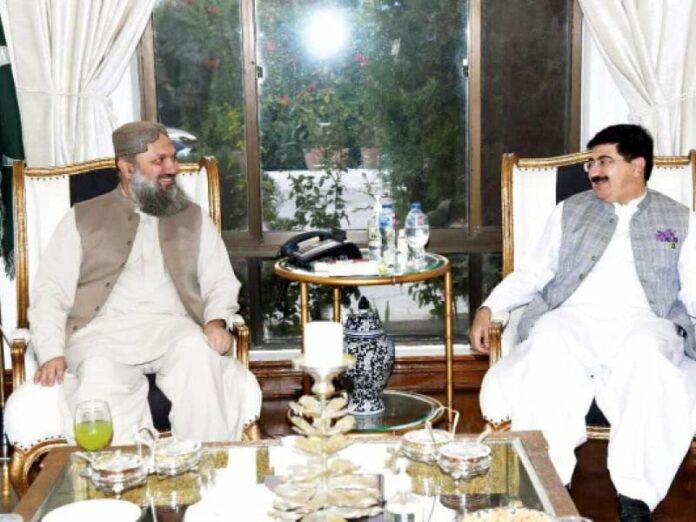——- Party’s once-unassailable position now eroding, holds a mere five seats in Balochistan Assembly
QUETTA: The Balochistan Awami Party (BAP), once enjoying its heyday as the harbinger of change in the provincial political realm, now finds itself in choppy waters after the February 8 general elections.
Having soared to the top as the big fish in 2018, BAP’s recent setback indicates a seismic shift in the province’s political tides.
Retiring Chairman Senate Sadiq Sanjrani found himself outmanoeuvred in the race for chief minister as the political tactics of Pakistan Peoples Party (PPP) leader, Mir Sarfaraz Bugti, stole the spotlight.
Sanjrani currently sits in the Balochistan Assembly.
Founded in 2018, BAP swiftly rose to prominence under the leadership of influential figures such as Jam Kamal Khan and Mir Quddus Bizenjo, both of whom served as Chief Ministers of Balochistan. With a promise of development and progress, BAP secured a substantial mandate, positioning itself as a dominant force in provincial and federal politics. However, the party’s once-unassailable position has been eroded, as evidenced by its diminished presence in the provincial assembly, where it now holds a mere five seats. The defection of key fig-ures, including former presidents Jam Kamal Khan and Mir Quddus Bizenjo, has further weakened BAP’s stronghold.
Their decision to switch allegiance to rival factions such as the PPP, Pakistan Muslim League (N) (PML-N), and the Jamiat Ulema-e-Islam-Fazl (JUI-F) underscores the depth of BAP’s crisis.
The erosion of BAP’s support base highlights the fluid nature of Balochistan’s political landscape, char-acterized by shifting alliances and allegiances. The party’s inability to retain key figures and navigate the intricate webs of regional politics has left it vulnerable to the machinations of its competitors. Moreover, BAP’s decline offers an opportunity for other parties to assert their influence and shape the province’s future picture.
As BAP grapples with diminishing influence, Balochistan’s political scene enters a phase of transition. The recent general elections have not only redrawn the political map but have also set the stage for renewed competition and strategic manoeuvring among various factions.
How BAP responds to these challenges will be crucial in determining its future relevance in the prov-ince’s political landscape.
Once heralded as the vanguard of change, BAP’s fall from grace underscores the volatile nature of Bal-ochistan’s politics. As new power dynamics emerge, the stage is set for a period of intense competi-tion and realignment, reshaping the contours of Balochistan’s political landscape for years to come. –Agencies




